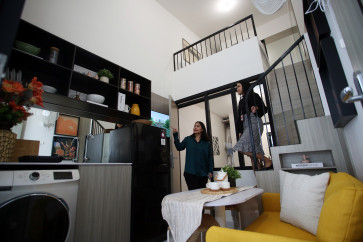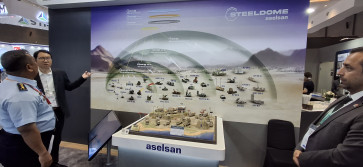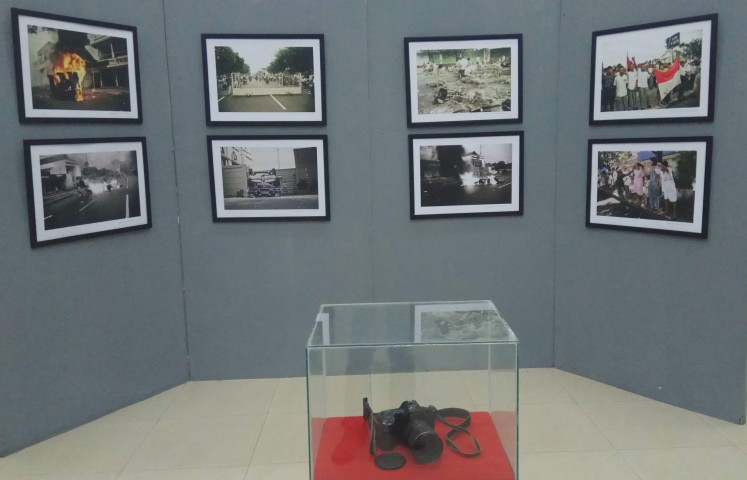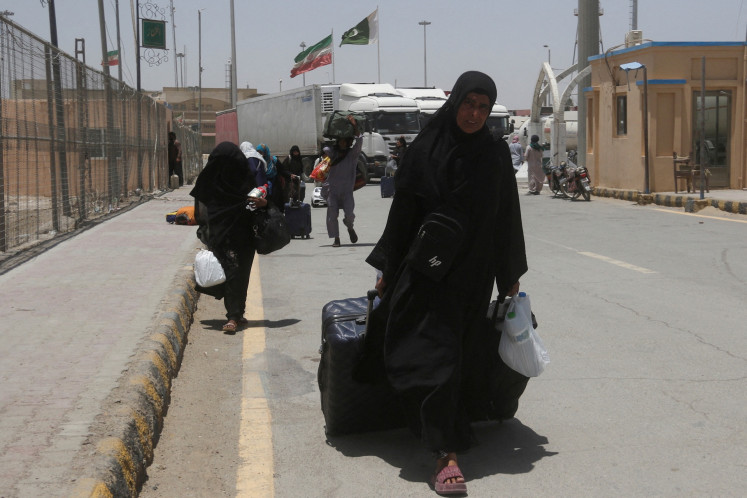Popular Reads
Top Results
Can't find what you're looking for?
View all search resultsPopular Reads
Top Results
Can't find what you're looking for?
View all search results[ANALYSIS] Developing industrial estates to drive economic growth
The COVID-19 pandemic has further reduced the manufacturing sector’s performance.
Change text size
Gift Premium Articles
to Anyone
![[ANALYSIS] Developing industrial estates to drive economic growth](https://img.jakpost.net/c/2020/07/14/2020_07_14_100154_1594709622._large.jpg)
M
anufacturing is the largest sector in the national economy. The manufacturing sector contributed to 19.9 percent of Indonesia’s gross domestic product (GDP) in 2020, showing that it has a large role in boosting economic growth.
However, the manufacturing sector’s contribution to GDP has decreased since 2004. In 2003, for example, its contribution was 28.1 percent. The downward trend has occurred in several ASEAN countries, such as Thailand, the Philippines and Malaysia, but Indonesia has shown the steepest downward manufacturing trend in the last 10 years.
On the other hand, Vietnam has experienced an increasing share of its manufacturing sector to GDP since 2020. Vietnam has a strong commitment to encouraging the manufacturing sector to spur its economy.
The growth of Indonesia’s manufacturing sector tends to slow down and relies heavily on natural resources. This can be seen from the structure of the national manufacturing sector in the last 10 years. The biggest contributors to manufacturing were the food and beverage industry, as well as the coal and oil and gas refining industry, which amounted to 34.4 percent and 10.0 percent, respectively, in 2020.
The COVID-19 pandemic has further reduced the manufacturing sector’s performance. In 2020, it contracted by 2.93 percent, the lowest since the 1998 crisis. Almost all of the processing industry’s subsectors contracted in 2020, except chemical, pharmaceutical and traditional medicine businesses, as well as basic metals, food and beverages, and paper and paper items.
Manufacturing industries that experienced the deepest contraction were transportation equipment, machinery and equipment, and non-metal mineral goods, with contractions of 19.9 percent, 10.2 percent and 9.1 percent, respectively.
However, the Purchasing Managers’ Index (PMI) of the manufacturing sector continued to increase in early 2021. In March, Indonesia's manufacturing PMI stood at 53.2, an indication that it was starting to recover.
To boost the manufacturing sector, the government created an industrial estate development program. Article 44 of the Jobs Creation Law stipulates that manufacturing companies that run processing activities must be located in industrial estates or industrial designated areas, in accordance with the spatial plan for provinces, regencies and municipalities that do not yet have an industrial area.
Besides encouraging the manufacturing sector, the development of industrial estates could also boost regional economic growth. This is due to economic agglomeration where there is a concentration of economic activity. Economic agglomeration has a positive effect on economic growth as a result of capital accumulation and large economies of scale.
Data from the Agrarian Affairs and Spatial Planning Ministry shows that the proportion of designated industrial land in the spatial plans of regencies and municipalities that have been granted building use rights (HGB) has only reached 10.36 percent; therefore, there is still great potential for land use to encourage the development of industrial estates in various regions.
According to data from the Industrial Estate Association (HKI), Indonesia has 100 industrial estates as of January, with a combined area of 97.6 million hectares. The 2020-2024 National Medium-Term Development Plan (RPJMN) states that the government will build 27 new industrial estates, consisting of two industrial areas in Java and 25 industrial areas outside Java.
The two industrial areas to be built in Java are in Brebes, Central Java and in Bangkalan, East Java. In the 2015-2019 RPJMN, the government targeted the development of 21 priority industrial estates, but only eight were successfully built and have started operation.
The development of industrial estate faces several challenges. The Industry Ministry said the challenges include document preparation, land acquisition and spatial planning, licensing, inadequate infrastructure, the professionalism of managers and tenants, and comfort or security in running businesses.
To overcome these challenges, the Job Creation Law provides facilities for land acquisition for industrial estate development. Special economic zones (SEZ) and industrial areas are designated as activities for the public interest, so their land acquisition process falls under the purview of Law No. 2/2012 on land acquisition for the development of public interest.
Besides that, the Land Bank also supports the provision of land for SEZ. Another strategy in the Job Creation Law is the ease of obtaining a business license for SEZ and industrial areas. Regarding the provision of infrastructure, the government will provide infrastructure and utilities that support the production process of the processing industry.
We see that several strategies can be used to make industrial estates more attractive. In the provision of infrastructure, there are some issues that need to be addressed. Integrated infrastructure will support industrial estates. Increasing the capacity of utility infrastructure (such as electricity, gas and telecommunication networks) and good connectivity infrastructure (locations close to seaports and airports) can reduce logistics and operational costs, thus reducing production costs for companies operating in industrial areas.
Skills in industrial estate management also need to be improved to attract investors through the role of strategic partners. The ability of industrial estate managers in managing funding, technology and infrastructure greatly affects the operational costs of anchor industries and tenants.
Another strategy is increasing the quality of human resources in certain industrial estates. The low quality of workers is one of the causes contributing to the low competitiveness of the manufacturing sector.
Statistics Indonesia (BPS) data shows that most workers in the manufacturing sector are junior high school graduates and below, or 54.2 percent of the total workers in the manufacturing sector as of August 2020. Therefore, it is important to develop human resources through vocational schools and training centers to increase the capacity and competence of workers in industrial estates. The provision of training and education for workers must be in accordance with the needs of the industry in certain industrial estates.
Finally, the development of industrial estates must pay attention to the business advantages of anchor industries and tenants so that they can attract investors. There are three categories of investors in industrial estates: industrial estate managers, utility providers and industrial anchors and tenants. The involvement of the three investors in the development of an industrial area is important to create a win-win solution.
***
Senior industry and regional analyst at Bank Mandiri









